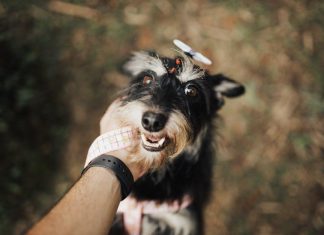Welcoming a new puppy into your home is a joyous occasion, filled with cuddles, playful antics, and the start of a lifelong friendship. However, as any dog owner will tell you, it also comes with its own set of challenges. From chewing shoes to barking at the mailman, puppies are full of energy and curiosity, which makes effective training essential for a harmonious household. One of the most rewarding methods to train your new furry friend is through clicker training—a positive reinforcement technique that is both fun and effective. In this guide, we’ll explore the ins and outs of clicker training, helping you to build a strong, communicative bond with your puppy while teaching them the skills they need to thrive. Whether you’re a first-time pet parent or a seasoned dog lover, this approach will enhance your training sessions and bring out the best in your puppy, setting the stage for a lifetime of good behavior and companionship.
Understanding the Basics of Clicker Training
At its core, clicker training is a form of positive reinforcement that utilizes a small mechanical device to mark desired behaviors. When your puppy performs an action you want to encourage, you immediately click the device and follow it with a treat. This method effectively bridges the gap between the desired behavior and the reward, helping your puppy quickly understand what actions are being reinforced. The beauty of clicker training lies in its simplicity and clarity, making it a powerful tool for teaching a variety of commands and behaviors.
- Consistency: Always click at the exact moment your puppy performs the desired behavior. This ensures a clear connection between the action and the reward.
- Timing: Follow the click with a treat promptly to reinforce the behavior. Delayed rewards can confuse your puppy and weaken the training process.
- Patience: Each puppy learns at its own pace. Celebrate small victories and build on them gradually, maintaining a positive and encouraging environment.
By incorporating these principles, you can establish a strong foundation for your puppy’s learning journey, making training sessions both effective and enjoyable.
Building a Strong Bond with Your Puppy
To nurture a loving and respectful relationship with your furry friend, clicker training can be an invaluable tool. This positive reinforcement technique not only enhances your puppy’s learning experience but also fosters trust and communication. Clicker training involves using a small device that makes a distinct clicking sound to mark desired behaviors, followed by a treat. It’s a fun and effective way to teach your puppy new commands while ensuring they associate training sessions with positive outcomes.
Here’s how to get started:
- Choose the Right Clicker: Opt for a clicker that is easy to handle and produces a clear sound.
- Start with Basic Commands: Begin with simple commands like “sit” or “stay.” Click the device immediately when your puppy performs the desired action, then reward them with a treat.
- Be Consistent: Consistency is key in training. Use the clicker every time your puppy exhibits the desired behavior to reinforce learning.
- Keep Sessions Short: Puppies have short attention spans, so keep training sessions brief but frequent.
- Stay Patient and Positive: Celebrate small victories and be patient. Remember, building a strong bond takes time and understanding.
With dedication and love, clicker training can become a delightful bonding activity for both you and your puppy, setting the foundation for a lifetime of companionship and mutual respect.

Step-by-Step Guide to Clicker Training Techniques
Clicker training is a popular method used by many dog owners to teach their puppies new behaviors through positive reinforcement. To begin, you’ll need a clicker, which is a small device that makes a distinct clicking sound. This sound acts as a marker to let your puppy know they’ve done something right. Here’s how to get started:
- Get Your Supplies Ready: You’ll need a clicker and some tasty treats that your puppy loves. Choose small, bite-sized pieces to keep your puppy motivated without overfeeding.
- Introduce the Clicker: Start by clicking the device and immediately giving your puppy a treat. Repeat this several times until your puppy associates the click with receiving a reward.
- Teach Simple Commands: Begin with basic commands like “sit” or “stay.” When your puppy performs the desired action, click and treat immediately to reinforce the behavior.
- Practice Consistently: Regular practice is key. Short, frequent sessions are more effective than longer ones. Aim for 5-10 minute training sessions a few times a day.
With patience and consistency, clicker training can be a fun and rewarding way to bond with your puppy while teaching them essential skills. Remember, the goal is to create a positive learning environment where your puppy feels encouraged and excited to learn.

Troubleshooting Common Clicker Training Challenges
Even the most enthusiastic puppy can encounter a few hiccups during clicker training. It’s important to recognize and address these challenges promptly to ensure a smooth training journey. One common issue is the puppy not responding to the clicker. This often occurs when the clicker sound isn’t associated with a reward. To rectify this, practice a simple exercise: click the clicker and immediately offer a treat. Repeat this until your puppy starts to associate the sound with positive reinforcement.
- Lack of focus: Puppies can easily get distracted. Ensure your training environment is free from interruptions and keep sessions short, around 5-10 minutes.
- Inconsistent timing: The timing of the click is crucial. Make sure to click exactly when the desired behavior occurs to reinforce the action effectively.
- Overuse of the clicker: Remember, the clicker is a tool to mark a specific behavior, not a command. Use it sparingly and wisely.
Embrace these challenges as learning opportunities, both for you and your puppy. With patience and persistence, you’ll find that these hurdles become stepping stones to success.
















